Spend
LeanIX SMP offers versatile capabilities for tracking service expenditures, regardless of the data source. It provides a seamless experience by extracting spending information from various channels, ensuring comprehensive oversight of your financial data.
SMP supports the following data sources for retrieving spending information:
- Adding Spend Manually: add spend value and other details.
- Upload invoice: drag and drop an Invoice document (PDF, JPG, JPEG, PNG)
- File import: Uploading an existing table-based document (XLSX or CSV)
- Discovery Integration: integrating a Financial Credit Card or Expense system
- Manage Integration: Some Service Providers, such as Amazon Web Services, deliver invoice data out of their API
Adding Spend Manually
Admins, Department admins, Business Owners, and Delegates can manually add and modify spending information when reviewing the Service Spend section.
To do this, click on the blue button Add Manual Spend:
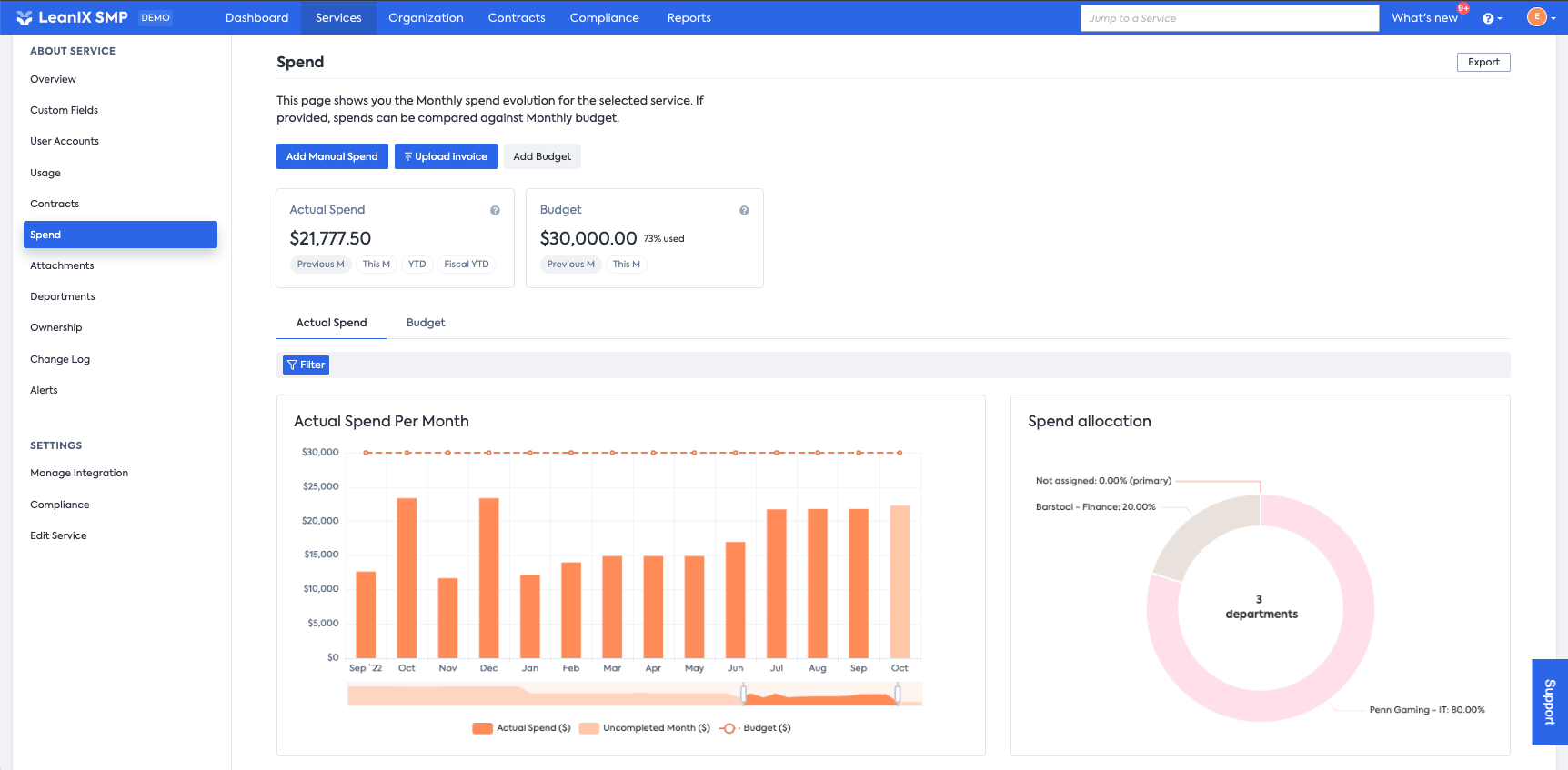
When adding or editing Spend, you must first provide the monthly Spend value to allocate.
Then, define for which month this value should be charged and provide a text description if needed. Please note that there is no possibility to add any attachments here.
Upload Invoice
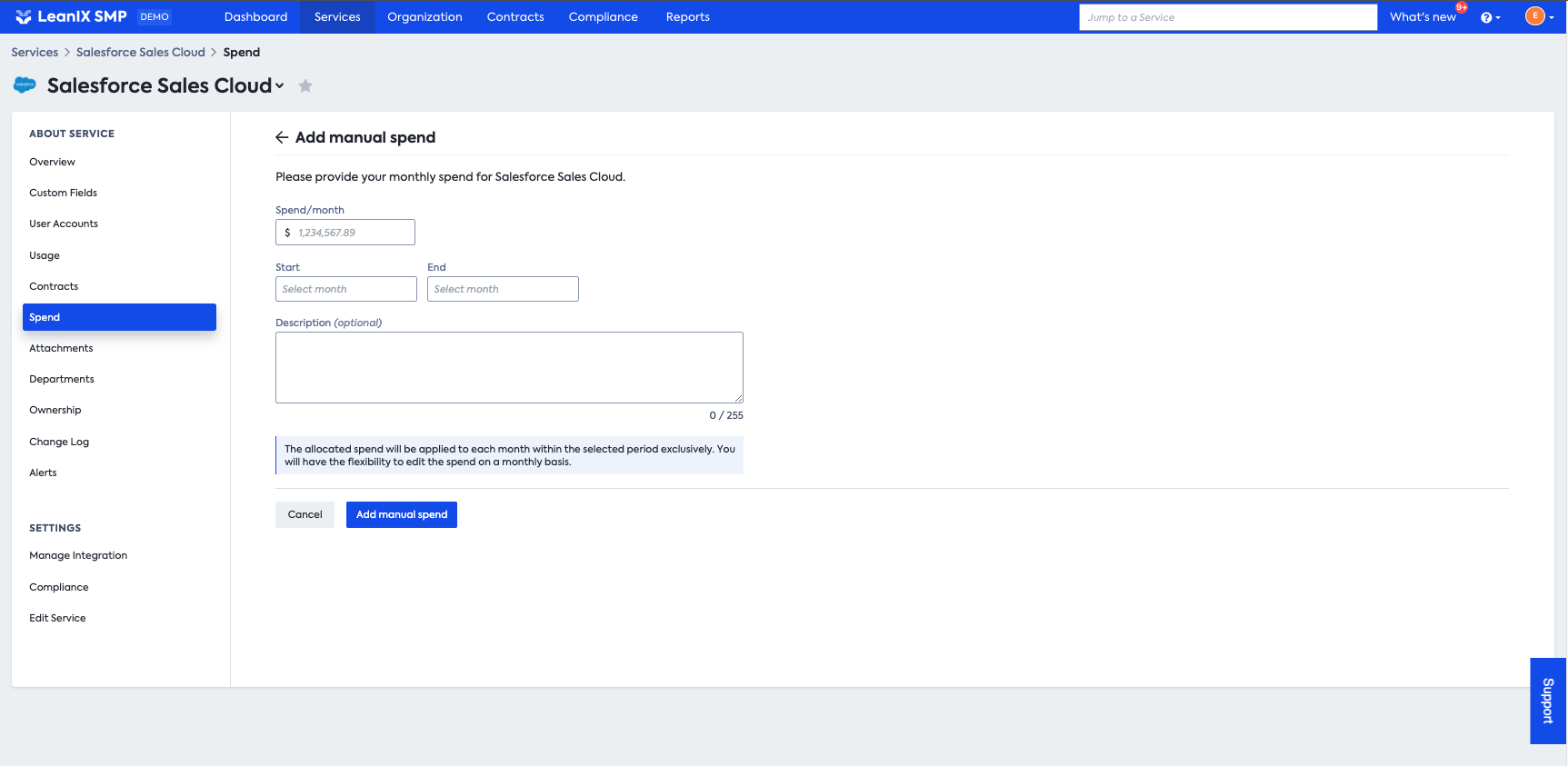
In this specific scenario, any user will have the possibility to add Invoices to a Service simply by dropping a file into the designated area:

With this, our team will review and assign this spend accordingly.
File Import
With this method, Admins and Department Admins can import any expense report or manually maintained sheet that contains spending data. Under Settings, select File-based Discovery.
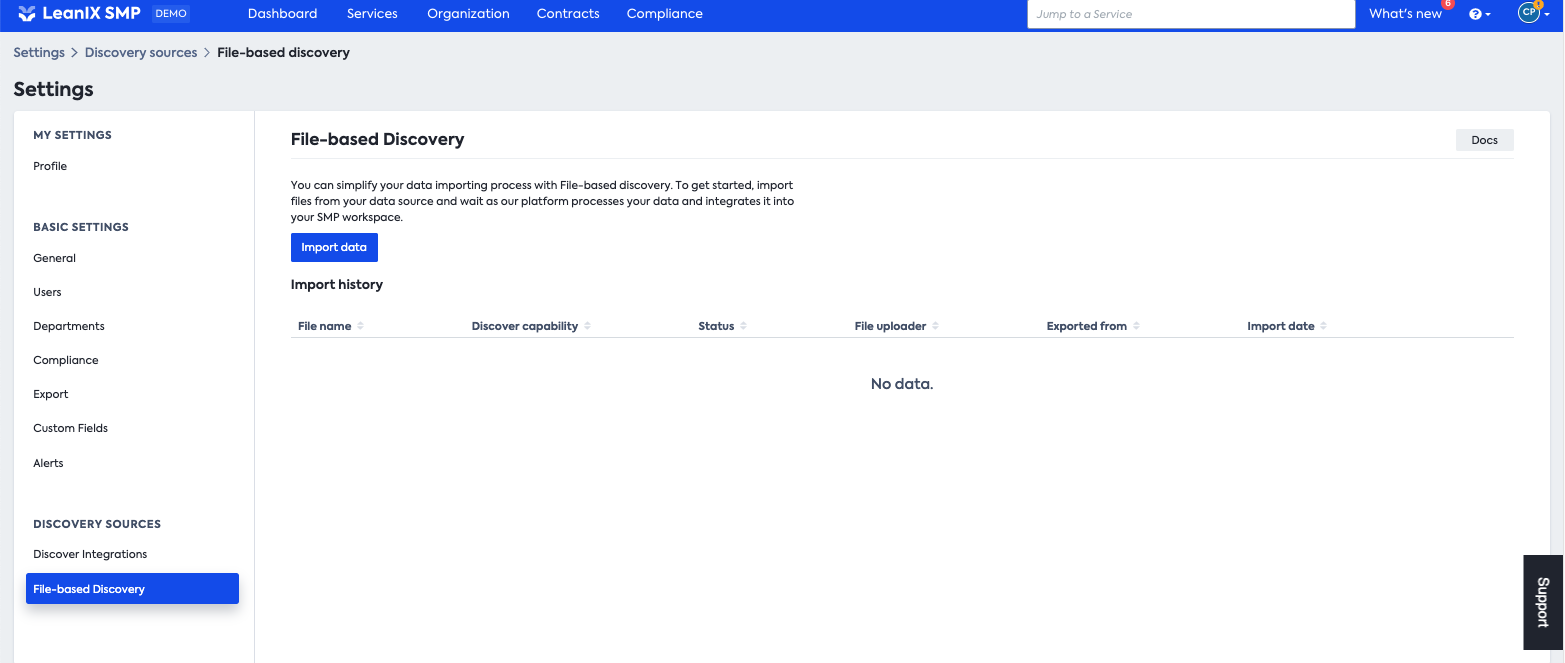
After clicking on Import data, you will follow the steps below:
- Indicate the category data your file provides (choose between Financial System, Expense Management System, or Credit Card).
- Under “Capability” select Service and Spend Discovery
- According to the data provided above, SMP will provide you with the desired formatting, with the option to download the according template from the page.
- Indicate the source of the data (Netsuite, Coupa, Intuit, etc.)
- Drop the file in the designated area.
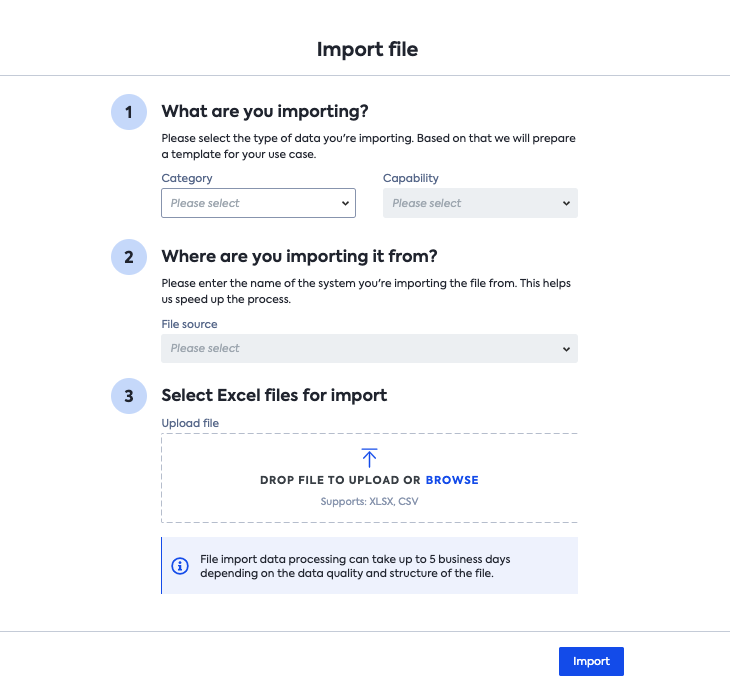
Reviewing Spend Records
LeanIX SMP provides two views of Spend data:
- A bar chart view: Here, you will, by default, see the Spend representation for the last 13 months. Note that you can adjust the displayed spend period by minimizing/expending the period selector (from 1 to 13 months). This bar also allows one to review the historic spend by scrolling the period selector to the left.
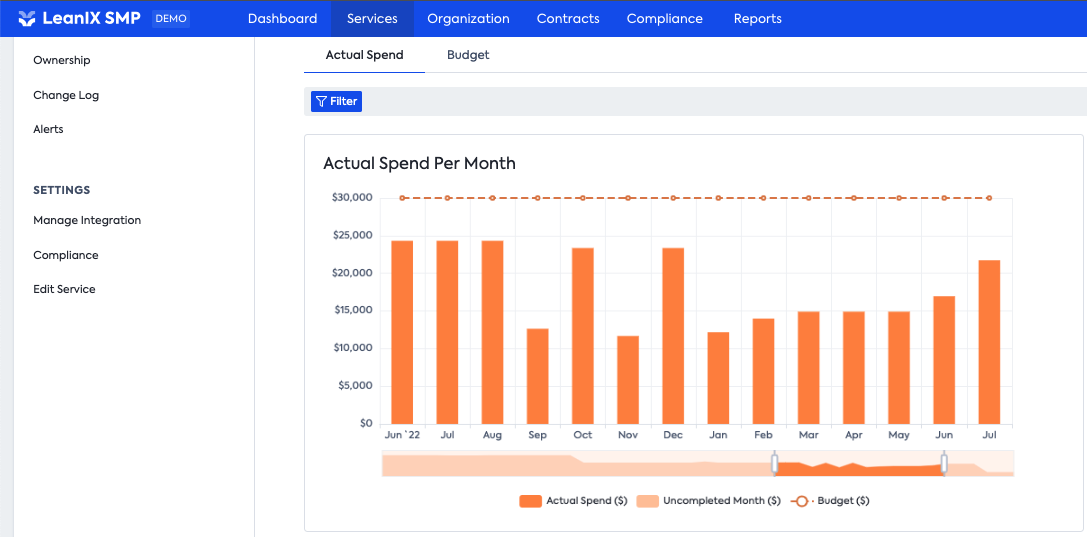
On top of this view, you can define filters that will impact this graphical representation. Filters can offer the following capabilities:
- Spend Allocation Department. With this filter, you will display the Spend on the bar chart based on the Department(s) selected:
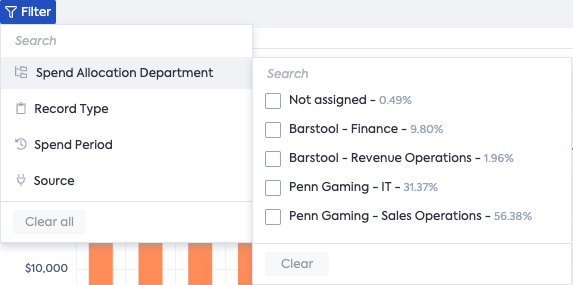
This spend allocation is also automatically represented on the pie chart located on the right side:
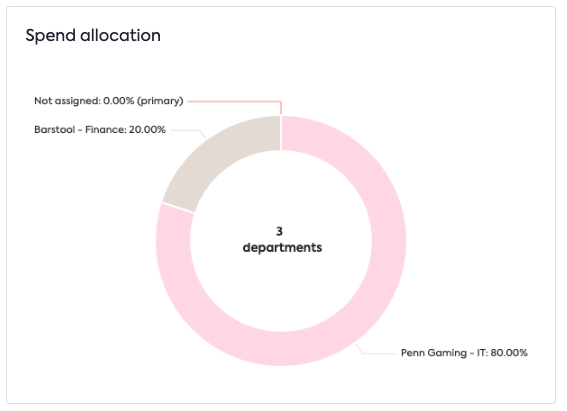
Note that this filter can only affect the bar charts but not the spend table below.
- Record Type. The record type represents the type of spending that has been provided in SMP. This filter allows you to display this data based on this characteristic.
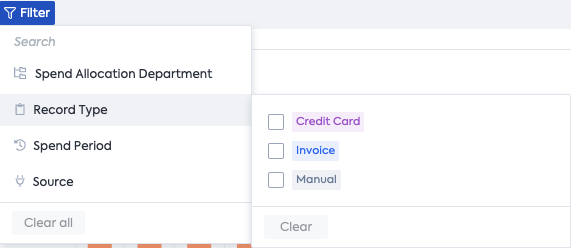
- Credit card: when the Spend comes from a Credit card system.
- Invoice: when the Spend has been discovered through an Expense or Financial System.
- Manual: when the user has provided the Spend through the UI.
- Spend Period. With this filter, you can select the period you want to review Spend evolution.
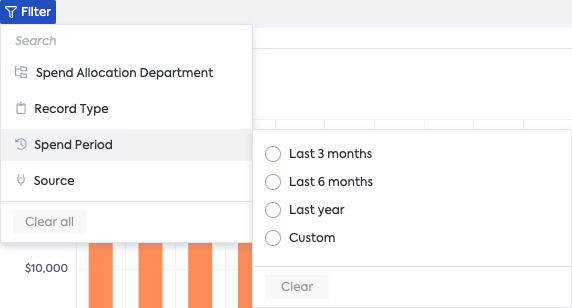
- Source. With this filter, you can choose the source of spend data that you want to review.
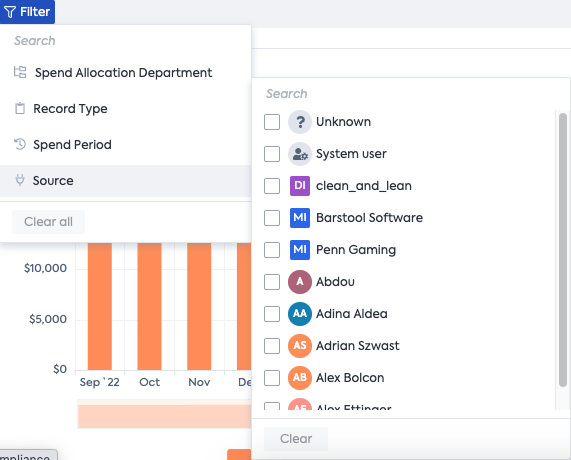
Below these bar charts, Spend data is available as a table with the following column:
- Month: designate the month for which the Spend is assigned.
- Value: represents the value of the Spend.
- Record type: defines the channel from which the Spend is coming.
- Invoice ID: refers to the Invoice found on the Financial or Expense system.
- Description: is a text provided by the system or from the user.
- Charge date: the date on which the Invoice has been charged.
- Invoice Date: the date when the Invoice has been generated.
- Source: designate the source where the spend data is coming from.
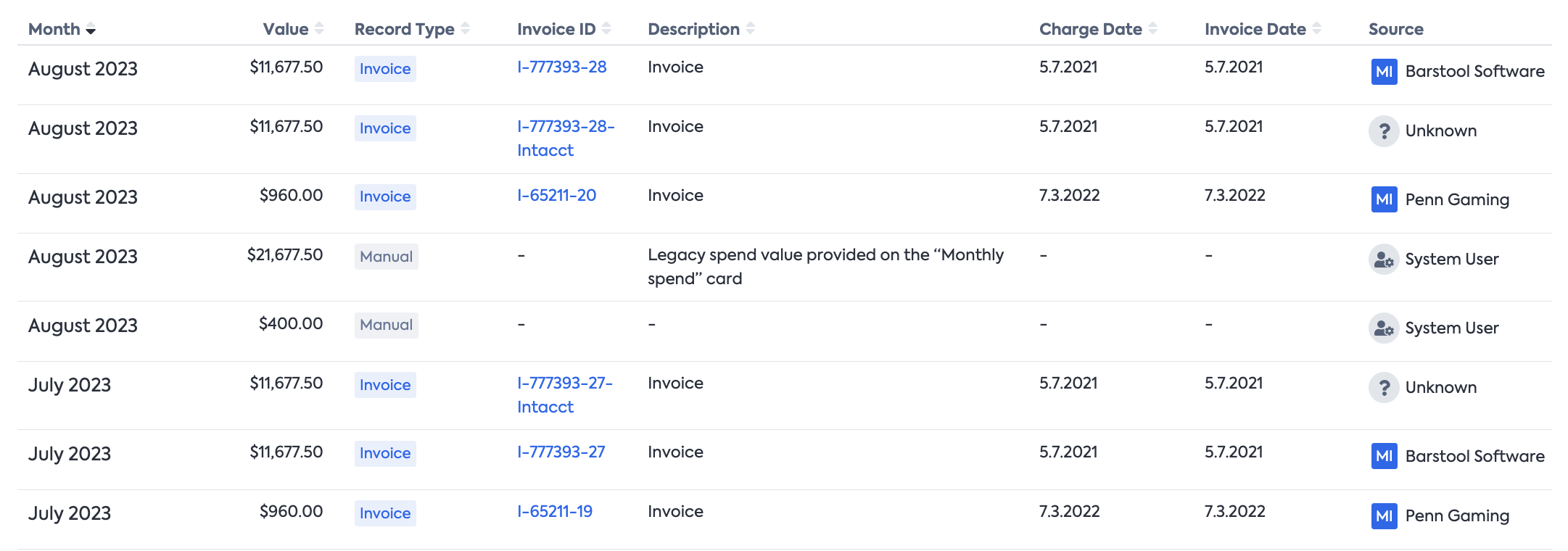
Updated 9 months ago
